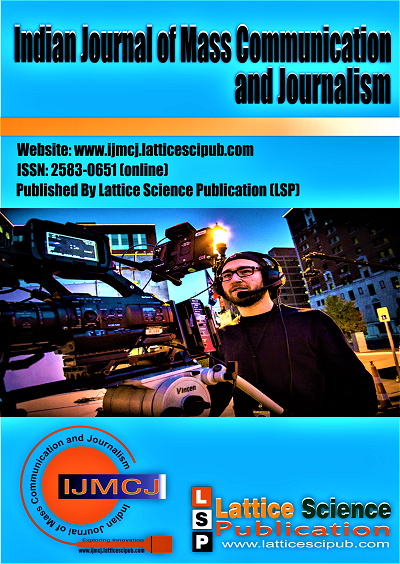Environmental Issues and Strategic Communication Planning for Tadlac Ecotourism Project, Los Banos, Laguna, Philippines
Main Article Content
Abstract
Tadlac Lake, Los Baños, Laguna has been visited a lot of visitors recently. With the increase of number of visitors, environmental issues confront the integrity of Tadlac Lake Ecotourism Project (TLEP). The study was conducted to address these issues using proper communication strategy since the masterplan lacks a communication component by identifying the key elements and their communication need and resources. A descriptive method using case study was used to answer the research problem and objectives. Focus Group Discussions and Key Informant Interview were used for gathering data wherein representatives of different stakeholders were categorized into three namely: government agencies, civil society groups, and private business served as the respondents of the study. Based on the findings, environmental issues in TLEP affect the land, water, waste, biodiversity and environmental pollution. Further, stakeholders indicated that they want to know about ecotourism; benefits and drawbacks and the projects of the government related to it. The information source preferred by the stakeholders are barangay consultations, brochures, flyers, and leaflets while the most accessible way for information sharing is face-to-face interaction. A communication strategy with key elements was also proposed based on all the results of this study.
Downloads
Article Details

This work is licensed under a Creative Commons Attribution-NonCommercial-NoDerivatives 4.0 International License.
How to Cite
References
UNWTO. (2002). Ecotourism and Protected areas. (U. N.
Organization, Producer) Retrieved March 10, 2016, from Sustainable
Development of Tourism:
http://sdt.unwto.org/content/ecotourism-and-protected-areas
Codilla, M. Z. (2013, August 29). 'Ecotourism can promote local
sites, but weigh costs, impact'. Retrieved February 20, 2016, from
Inquirer.net:http://newsinfo.inquirer.net/477253/ecotourism-canpro
mote-local-sites but weigh-costs-impact
Sunkar, A., & Cereno, R. (2013). Ecotourism Development in Brunei
Darussalam, Indonesia, Lao PDR, Myanmar, Singapore and
Philippines. In S.-i. Kim, M. Kang, & D. Sukmajaya, Opportunities
and Challenges of Ecotourism in ASEAN Countries (pp.52-87).
Seoul, Republic of Korea.
Executive Order No. 111, s. 1. (1999, June 17). Official Gazette.
Retrieved from https://www.officialgazette.gov.ph/1999/
/17/executive-order-no-111-s-1999/
Bricker, K. S. (n.d.). Trends and Issues for Ecotourism and
Sustainable Tourism. Retrieved March 5, 2016, from
https://sustainabledevelopment.un.org/content/documents/4099Pres
entation%00.1%20Kelly%20Bricker%20%20full%20presenttion.pd
f
United States Agency for International Development. (n.d.).
Environmental Guideline for the Development Activities in Latin
America and Carribean. Retrieved January 2018, from Global
Environmental Management Support
https://usaidgems.org/Sectors/ecotourism.htm
Urbis Philippines Inc. (2007). Formulation of a Master Development
Plan and Feasibility Studies of Priority Banner Eco-Tourism Sites
and Support Structures for the Proposed Tadlac Lake Nature Park
and Eco-Tourism Destination. Revised Master Plan
Sobnosky, K. J. (2001). Effective Communication in Environmental
Management. Environmental Quality Management. [CrossRef]
Grenna, L., Hilbruner, R., Santi, E., Scuppa, G., & Vereczi, G.
(2006). Communication and Sustainable Tourism. Global
E-Conference and Summer Speaker Series on the Role of
Development Communication in Sustainable Tourism.
Acunzo, M., Pafumi, M., Torres, C., & Tirol, M. (2014).
Communication for Rural Development. (Grenna, Hilbruner, Santi,
Scuppa, & Vereczi, 2006) Food and Agriculture Organization. FAO.
Munodawafa, D. (2008). Communication: concepts, practice and
challenges. Retrieved 21 April, 2016, from
http://her.oxfordjournals.org/(n.d.).
Del Rosario, E. R., Evina, K. P., Gibe, J. A., Lucernas, M. A.,
Maralit, J. R., Resurreccion, R. D., et al. (2015). Environmental
Performance Report and Management Plan for Laresio Lakeside
Resort and Upgrade Expansion Project . School of Environmental
Science and Management, University of the Philippines Los Baños.
Rogers, P. J., Petrosino, A., Huebner, T. A., & Hacsi, T. A. (2000).
Program Theory Evaluation: Practice, Promise, and Problems.
Retrieved May 08, 2016, from http://wmich.edu [CrossRef]
Baxter, P., & Jack, S. (2008). Qualitative Case Study Methodology:
Study Design and Implementation for Novice Researchers . The
Qualitative Report, 13 (4), 544-559. BIDANI: A Strategy for
Promoting Local Development and Nutrition Improvement (2017,
March 29). Retrieved August 21, 2017, from University of the
Philippines: https://www.up.edu.ph/index.php/bidani a
strategy-for-promoting-local-development-and-nutrition-improveme
nt/
Zainal, Z. (2007). Case study as a research method. Jurnal
Kemanusiaan.
Yin, R. K. (1984). Case Study Research Design and Methods. Sage
Publications.
Asian Development Bank. (2012). Strengthening Participation for
Development Results An Asian Development Guide to Participation.
USAID Center for Development Information and Evaluation. (1996).
Performance Monitoring and Evaluation Tips.
Eden, C. & Ackermann, F. (1998). Making Strategy: The Journey of
Strategic Management . International Journal of Strategic
Management. [CrossRef]





